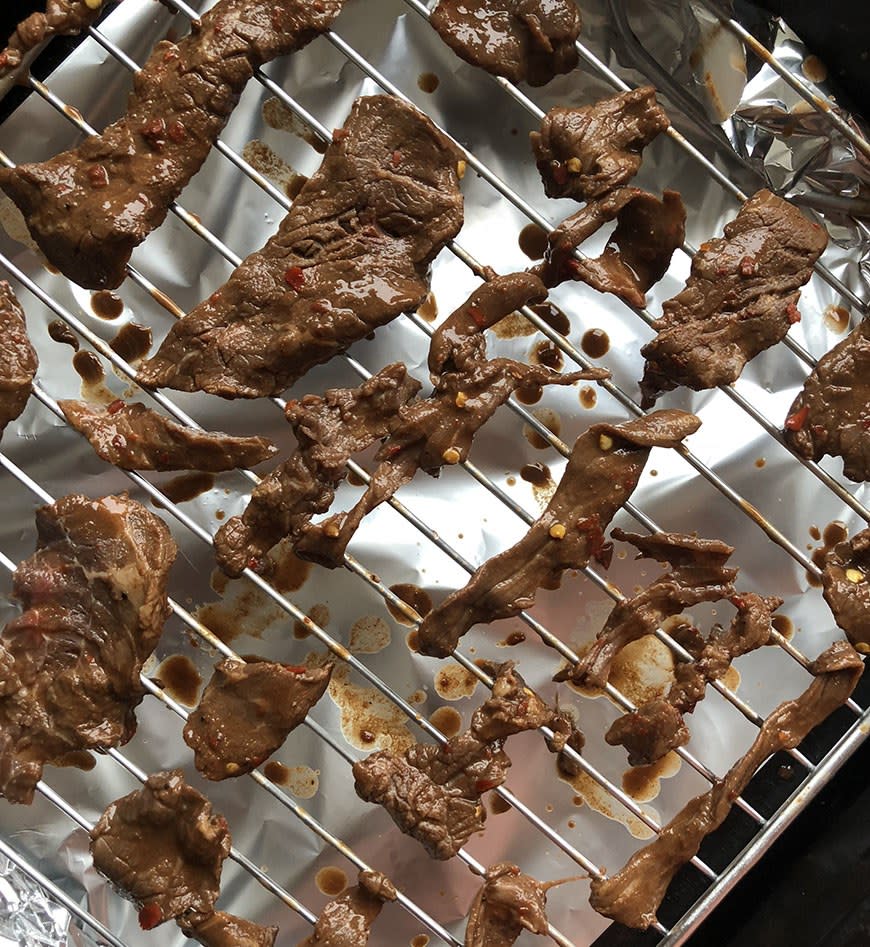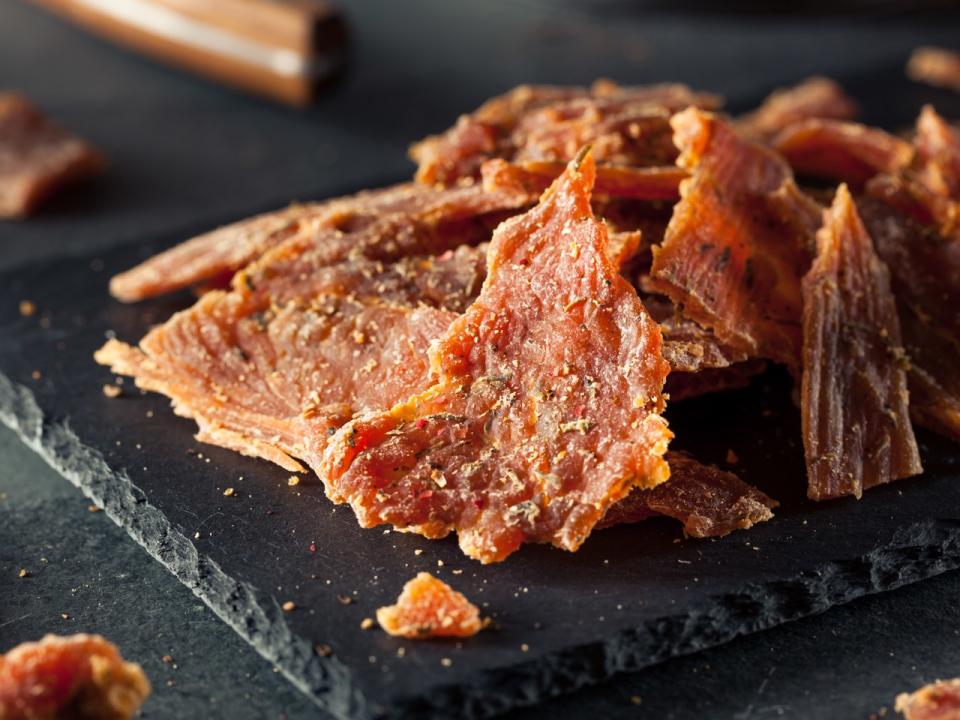How to Make Homemade Beef Jerky
I was never a big fan of beef jerky until I tried making it myself. Like so many of the cooking projects I've attempted, DIY jerky was way, way easier than I expected. But more importantly, it was also way, way tastier than any jerky I can ever remember eating.
It's not that I don't like jerky. I like it well enough, but it's always too tough and not tasty enough for me to want to eat more than a couple bites. On the other hand, making homemade jerky gives you the power to prevent it from getting too tough or too chewy, and you can use as much or as little seasoning as you like. For example, if you have a problem with the added sugar that's in a lot of store-bought jerky, doing it yourself guarantees you won't have to worry about that.
Though I thought I'd need fancy equipment—like a dehydrator—to make jerky, it turns out all you need is an oven and some time. With some tips from Jess Thomas, cofounder and CEO of the beef jerky company Made by True, and guidance from the Internet, here's everything I did to successfully make really freakin' good beef jerky.
Make sure you pick the right cut of meat.
Thomas tells SELF that the eye of the round cut is the best for beef jerky, because it's very easy to slice, the most tender, and inexpensive. "This is a single oval muscle in the rear leg of the cow, and it is very lean with just enough interior fat to retain the flavor of the marinade," he explains.
Freeze it just a bit before you slice it.
Thomas says it's better to freeze your cut of beef prior to slicing because it makes it easier to cut the slices as thin as you want them. But you don't have to freeze it entirely. Just a few hours in the freezer will work, he says. You'll know your meat is ready to slice when it begins to form ice crystals. You may want to trim the fat on the beef before you freeze it, because it's easier to do when the meat isn't frozen, and fat is what makes jerky spoil faster, says Thomas.
Slice against the grain to keep the jerky less chewy.
Thomas has found that the best way to slice meat for beef jerky is against the grain, because it makes the final product more tender and less chewy, and it's the easiest way to cut your meat. Before you can do it, though, you have to figure out where the grain is and which way it's going. If you look at the meat from above, you'll notice that it contains fibers that run from side to side—this is the so-called grain. To slice against it, simply cut through the fibers rather than in the direction they run.
And don't cut the meat too thin or too thick—it has to be just right.

When you're slicing meat for jerky, you're walking a very fine line. "If it is too thick it will be chewy, and if it is too thin, it will become very tough," Thomas explains. So what's the right size? He says you should aim for your slices to be about one-quarter-inch thick.
There's only one rule when it comes to making a marinade for jerky.
The nice thing about making jerky is that you can use whatever marinade you love. Thomas says that all seasonings and spices are fair game, as well as wet ingredients like vinegar, soy sauce, honey, maple syrup, and more. "Liquids like these help to break down the proteins in the meat, allowing for greater absorption of the marinade ingredients and therefore a far better flavor," Thomas explains.
While no seasonings or spices are off limits, Thomas says you will want to avoid using oil in your marinade for the same reason you might want to trim the fat—fat can cause jerky to spoil faster. Other than that, feel free to add what you want.
Once you've picked your marinade, Thomas says you'll need to refrigerate it with your meat in an airtight plastic bag for 12 to 24 hours.
Cook jerky at a very low temperature, and leave your oven slightly open.

Thomas says that you absolutely don't need a dehydrator to make beef jerky. However, you will need prep your oven a little differently than normal. He suggests lining the bottom pan of your oven with aluminum foil to protect it from marinade drippings. Before you put the meat in, he says you should also heat the oven to 300 degrees Fahrenheit.
When you're ready to get cooking, remove your meat from the marinade and set it on one of your oven racks. Then, Thomas says you'll need to bake it for 10 minutes at that temperature, because it will heat the meat to 160 degrees F and prevent any potential bacteria from forming.
After 10 minutes, lower the heat of your oven to 160 degrees F (or as low as it will go), put the meat inside, and prop the door of the oven slightly open with a wooden spoon. This will allow moisture to escape and air to circulate during the drying process, Thomas explains.
Let it cook for six to eight hours until it's noticeably dried out.
Thomas says the whole process will take you anywhere from three to eight hours. I checked on mine periodically throughout the day so that I could remove any thin pieces that had finished cooking before they dried out further.
In an airtight container, your homemade jerky will last one to two months.

If you follow some simple guidelines, Thomas says you should be able to keep enjoying your jerky for quite a long time. He reiterates that you'll want to trim any fat before you get cooking, because fat is the main culprit behind jerky that spoils quickly. After it's finished cooking, let it cool fully for several hours before packing it into an airtight container. Alternatively, he says you can store it in a paper bag for a day or two to expel any remaining moisture; just be sure to put it in an airtight container after you've done that.
Use your new knowledge to make tons and tons of jerky, because I know that's what I'll be doing.


